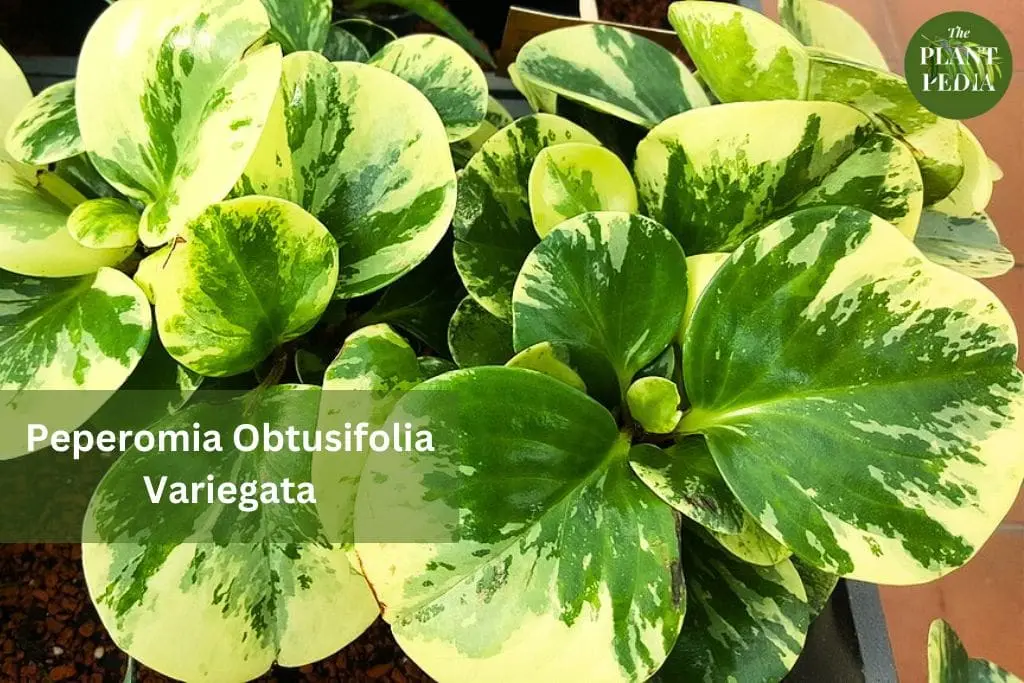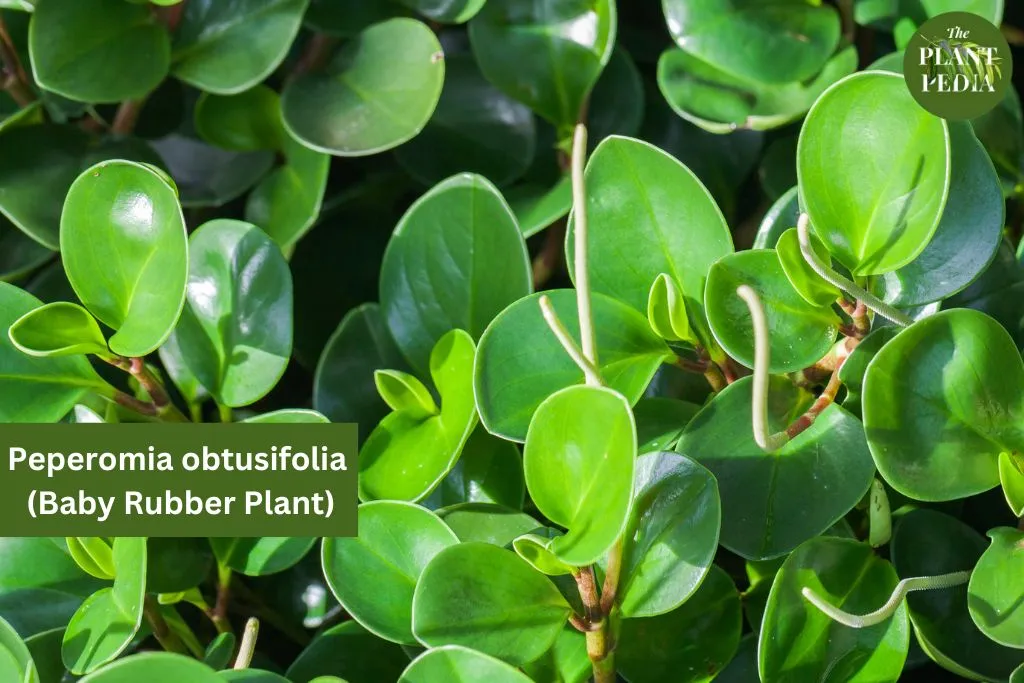Baby Rubber Plants, scientifically known as Peperomia obtusifolia, are charming, low-maintenance houseplants that have been steadily gaining popularity among plant enthusiasts.
These small, succulent-like plants are native to South America and are prized for their attractive foliage and numerous benefits.
In this comprehensive guide, we will delve deep into the world of Baby Rubber Plants, exploring their origins, care requirements, and the various benefits they bring to your home and well-being.
The Origins of Baby Rubber Plants
Before we dive into the benefits of Baby Rubber Plants, it’s essential to understand their origins. Baby Rubber Plants belong to the Peperomia family, which encompasses over a thousand species of tropical and subtropical plants.
The specific species, Peperomia obtusifolia, is primarily found in regions of South America, including Colombia and Venezuela.
These plants are well adapted to the shaded forest floors of their native habitat, making them excellent choices for indoor cultivation.
Their glossy, succulent-like leaves are a distinctive feature, and they come in various shades of green, including deep emerald, variegated, and even hints of red or cream.
Read: Peperomia Obtusifolia Flower: Exploring the Enigmatic Beauty.

Low Maintenance, High Reward
One of the most significant advantages of Baby Rubber Plants is their ease of care.
They are an excellent choice for both beginners and experienced plant enthusiasts alike. Here’s what makes them such a low-maintenance delight:
1. Light Requirements
Baby Rubber Plants thrive in moderate to low light conditions. They do best when placed in bright, indirect light, making them suitable for various indoor spaces, including offices and homes with limited natural light.
Their ability to adapt to different light levels sets them apart from many other houseplants that require specific lighting conditions.
2. Watering Needs
Overwatering is a common issue when caring for houseplants, but Baby Rubber Plants are forgiving in this regard. They prefer to dry out slightly between waterings.
A general rule of thumb is to water them when the top inch of the soil feels dry. This not only makes them resilient to occasional neglect but also helps prevent root rot, a common problem with many indoor plants.
3. Soil and Potting
These plants are not too demanding when it comes to soil type. A well-draining potting mix designed for houseplants works perfectly.
Repotting is rarely necessary, as Baby Rubber Plants prefer slightly snug pots. However, occasional repotting may be required if the plant outgrows its container.
4. Temperature and Humidity
Maintaining a consistent temperature and humidity level is essential for the health of your Baby Rubber Plant.
They thrive in average room temperatures, typically between 65°F to 75°F (18°C to 24°C). While they can tolerate lower humidity levels, they will appreciate a bit of extra moisture, which you can provide through misting or placing a humidity tray nearby.
5. Pest Resistance
Baby Rubber Plants are relatively resistant to common houseplant pests like spider mites and aphids. This resistance is another reason they are an excellent choice for novice plant owners.
However, it’s still essential to monitor your plants regularly for any signs of infestation and take prompt action if necessary.

The Many Benefits of Baby Rubber Plants
Beyond their ease of care, Baby Rubber Plants offer a wide range of benefits that make them a delightful addition to any indoor space. Let’s explore these benefits in detail:
1. Air Purification
Indoor air quality is a significant concern, given the amount of time we spend indoors. Baby Rubber Plants, like many other houseplants, have been proven to help purify the air by removing toxins and pollutants.
They do this through a process called phytoremediation, where they absorb and break down harmful compounds present in the air.
Some of the toxins they can help remove include formaldehyde and volatile organic compounds (VOCs) from household products and furniture.
2. Increased Humidity
As mentioned earlier, Baby Rubber Plants can help improve indoor humidity levels. In drier climates or during the winter when indoor heating systems can parch the air, these plants release moisture through their leaves, raising humidity in their immediate vicinity.
This is particularly beneficial for both the health of your plants and your own comfort.
3. Stress Reduction
The presence of indoor plants, including Baby Rubber Plants, has been linked to reduced stress and anxiety levels.
Their lush, green foliage can have a calming and soothing effect on the mind, helping to create a more relaxed and peaceful atmosphere in your home.
Studies have shown that simply tending to plants can also provide a sense of purpose and satisfaction.
4. Aesthetic Appeal
Baby Rubber Plants are known for their striking foliage. Their thick, glossy leaves add a touch of elegance to any room.
Whether you choose a classic green variety or a variegated one with creamy white stripes, these plants make for eye-catching decor pieces that can complement various interior design styles.
Their compact size makes them suitable for small spaces, shelves, and tabletops.
5. Natural Humidifiers
Apart from raising humidity levels, Baby Rubber Plants can act as natural humidifiers in your home. Placing several of these plants together can create a small microclimate with increased humidity.
This can be especially beneficial for specific areas, such as bedrooms or offices, where maintaining the right level of humidity is crucial for comfort and health.
6. Easy Propagation
Baby Rubber Plants are relatively easy to propagate, making them an excellent choice if you want to expand your indoor plant collection or share them with friends and family.
They can be propagated through leaf cuttings or stem cuttings placed in soil or water. With a bit of patience and care, you can quickly multiply your plant collection from a single healthy specimen.
7. Compatibility with Small Spaces
If you have limited space, Baby Rubber Plants are a fantastic choice. Their compact size and slow growth rate mean they won’t overpower your living space.
You can place them on a windowsill, a bookshelf, or in a hanging planter, adding a touch of greenery to even the smallest rooms or apartments.
Read: How Big Can Peperomia Obtusifolia Grow?
8. Pet-Friendly
For pet owners, it’s crucial to choose plants that are safe for their furry friends. Baby Rubber Plants are considered non-toxic to cats and dogs, making them a pet-friendly choice for indoor plant enthusiasts.
However, it’s still advisable to keep an eye on your pets and prevent them from nibbling on the leaves, as excessive consumption can lead to digestive discomfort.
9. Longevity
With proper care, Baby Rubber Plants can thrive for many years, becoming a beloved part of your home for a long time.
Their resilience and adaptability make them a reliable choice for anyone looking for a lasting green companion.
Caring for Your Baby Rubber Plant
To fully enjoy the benefits of your Baby Rubber Plant, it’s essential to provide the right care. Here’s a step-by-step guide to help you maintain a healthy and thriving plant:
1. Lighting:
- Place your Baby Rubber Plant in bright, indirect light. Avoid direct sunlight, as it can scorch the leaves.
- Rotate the plant occasionally to ensure even growth, as they tend to lean towards the light source.
2. Watering:
- Water your plant when the top inch of soil feels dry to the touch.
- Use a well-draining potting mix and a pot with drainage holes to prevent waterlogged roots.
- Be cautious not to let your Baby Rubber Plant sit in standing water, as this can lead to root rot.
3. Temperature and Humidity:
- Maintain a consistent room temperature between 65°F to 80°F (18°C to 27°C).
- If you live in a dry climate or during the winter, increase humidity by misting the plant or using a humidity tray.
4. Fertilization:
- Fertilize your Baby Rubber Plant during the growing season (spring and summer) with a balanced, water-soluble fertilizer diluted to half strength.
- Reduce fertilization in the fall and winter when the plant’s growth slows down.
5. Pruning:
- Trim any yellow or damaged leaves to encourage healthy growth.
- Pinch back the tips of the plant to promote bushier growth and prevent it from becoming leggy.
6. Repotting:
- Repot your Baby Rubber Plant only when it has outgrown its current pot, typically every 2-3 years.
- Choose a slightly larger pot with good drainage, and refresh the potting mix.
Common Issues and Troubleshooting
Even with the best care, you may encounter some common issues with your Baby Rubber Plant. Here are a few problems you might face and how to address them:
1. Yellowing Leaves:
- Yellowing leaves are often a sign of overwatering or poor drainage. Allow the soil to dry out between waterings and ensure proper drainage in the pot.
2. Drooping Leaves:
- If your plant’s leaves are drooping, it may need more water. Check the soil moisture and adjust your watering routine accordingly.
3. Leggy Growth:
- Leggy growth with elongated stems and widely spaced leaves can result from insufficient light. Move your plant to a brighter location to encourage more compact growth.
4. Brown Leaf Edges:
- Brown leaf edges can be a sign of low humidity. Increase humidity by misting the plant or using a humidity tray.
5. Pests:
- While Baby Rubber Plants are relatively pest-resistant, they can still attract pests like mealybugs or spider mites. Treat infestations promptly with neem oil or insecticidal soap.
My Personal Tips
Here are a few additional things to keep in mind when caring for your Baby Rubber Plant:
- Fertilize your plant every 6-8 weeks during the spring and summer growing seasons with a balanced liquid fertilizer.
- Be careful not to over-fertilize, as this can damage the roots.
- Repot your plant every 2-3 years, or when it outgrows its current pot.
- Baby Rubber Plants are susceptible to mealybugs and scale insects. Inspect your plant regularly for any signs of pests and take action immediately if you see any.
With proper care, your Baby Rubber Plant will thrive and bring you years of enjoyment.
Related FAQs:
Are Baby Rubber Plants safe for pets?
Yes, Baby Rubber Plants (Peperomia obtusifolia) are considered non-toxic to cats and dogs.
However, it’s still a good practice to prevent pets from nibbling on the leaves, as consuming large quantities may lead to mild digestive discomfort.
How often should I water my Baby Rubber Plant?
Water your Baby Rubber Plant when the top inch of soil feels dry to the touch.
Depending on factors like humidity and light levels, this typically ranges from once every 1-2 weeks. Ensure proper drainage to avoid overwatering.
Can I place my Baby Rubber Plant in direct sunlight?
No, it’s best to avoid direct sunlight for Baby Rubber Plants, as it can scorch their leaves. They prefer bright, indirect light. A north or east-facing window is typically ideal.
What is the best potting mix for Baby Rubber Plants?
Baby Rubber Plants thrive in a well-draining potting mix designed for houseplants. A mix of potting soil and perlite or sand to improve drainage is commonly used.
How can I increase humidity for my Baby Rubber Plant?
To increase humidity, you can mist the plant regularly, place a tray of water near the plant, or use a humidifier in the room. Grouping several plants together can also create a microclimate with higher humidity.
Do Baby Rubber Plants require fertilization?
Yes, Baby Rubber Plants benefit from fertilization during their growing season, which is typically in spring and summer. Use a balanced, water-soluble fertilizer diluted to half strength and apply it every 4-6 weeks.
Can I propagate my Baby Rubber Plant, and if so, how?
Yes, Baby Rubber Plants can be propagated easily through leaf cuttings or stem cuttings.
Place the cuttings in soil or water until they develop roots and can be potted into their own containers. This is a great way to share your plant with others or expand your collection.
Why are the leaves of my Baby Rubber Plant turning yellow?
Yellowing leaves are often a sign of overwatering or poor drainage. Allow the soil to dry out between waterings and ensure that your pot has proper drainage to prevent waterlogged roots.
Is pruning necessary for Baby Rubber Plants?
Pruning isn’t always necessary, but it can help maintain the plant’s shape and promote bushier growth. Trim any yellow or damaged leaves, and you can also pinch back the tips of the plant to encourage branching.
Can I place my Baby Rubber Plant outdoors during the summer?
Baby Rubber Plants can tolerate outdoor conditions during the summer, but they should be placed in a shaded or partially shaded spot. Avoid direct sunlight, strong winds, and extreme temperature fluctuations.
Conclusion
Baby Rubber Plants, with their numerous benefits and ease of care, are a delightful addition to any indoor space.
From their air-purifying qualities to their aesthetic appeal and stress-reducing properties, these plants offer a host of advantages.
With the right care and attention, your Baby Rubber Plant can thrive for years, providing you with a long-lasting and beautiful green companion.
Whether you’re a seasoned plant enthusiast or a beginner looking to dip your toes into the world of indoor gardening, Baby Rubber Plants are an excellent choice.
Their adaptability and resilience make them an ideal candidate for homes, offices, and small spaces. So, why not bring a touch of nature into your life by welcoming a Baby Rubber Plant into your home? With its glossy leaves and countless benefits, it’s sure to become a cherished part of your indoor oasis.
